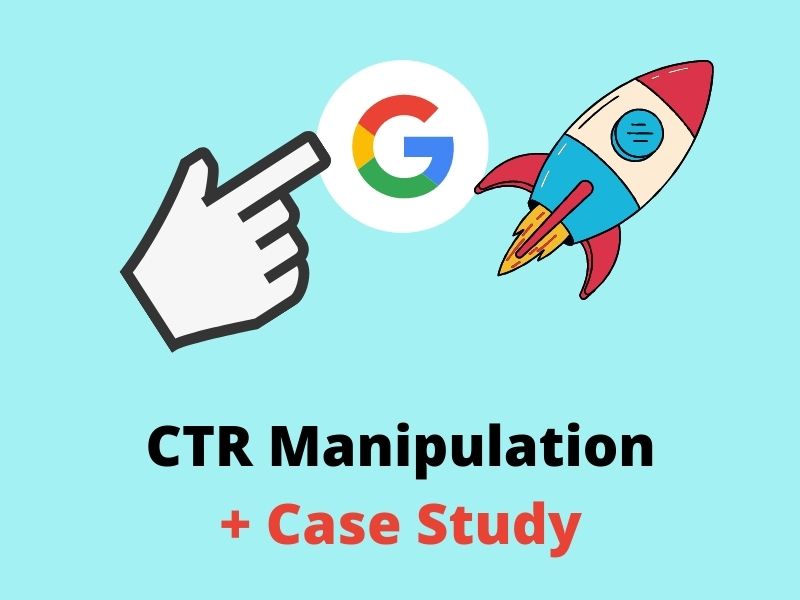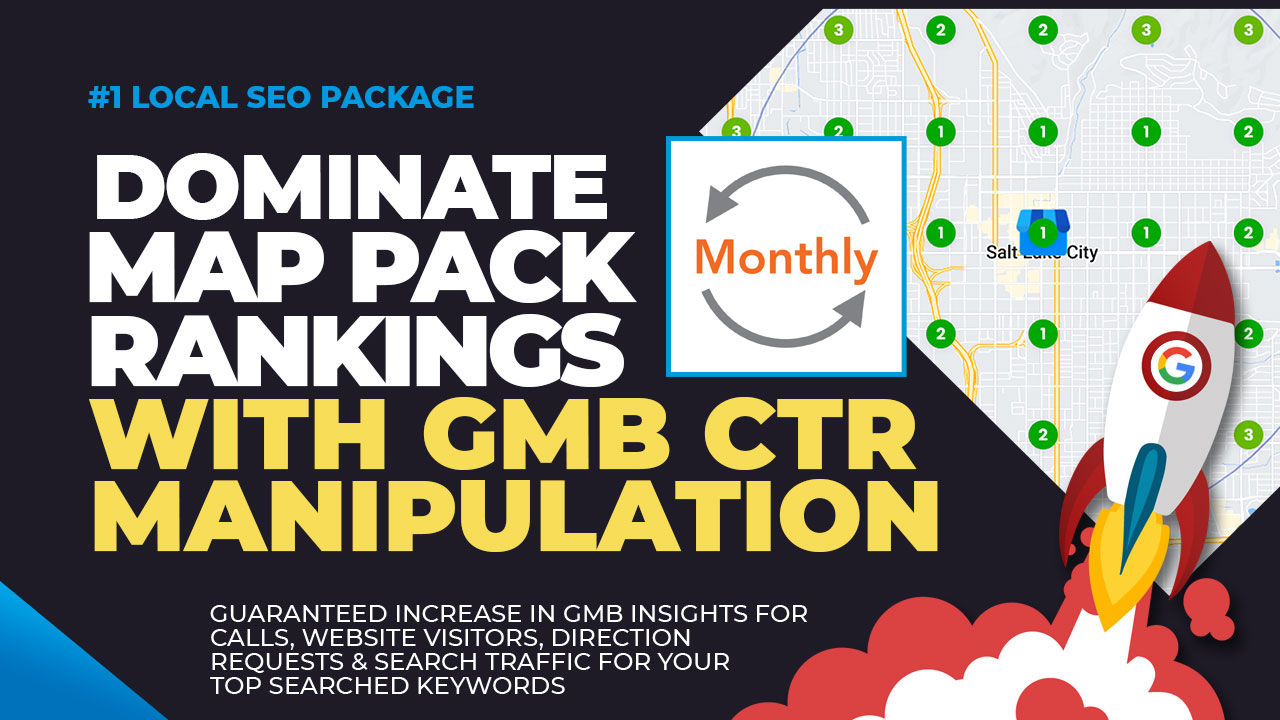Transform Your Click-Through Rates with Proven CTR Manipulation Techniques
Transform Your Click-Through Rates with Proven CTR Manipulation Techniques
Blog Article
Optimizing Organic Click-Through Rates With CTR Manipulation
The optimization of natural click-through prices (CTR) is a nuanced undertaking that pivots on recognizing both customer psychology and reliable material presentation. The landscape is rife with misunderstandings and oversimplifications regarding what really drives CTR.
Recognizing Click-Through Rates
Recognizing click-through rates (CTR) is essential for reviewing the effectiveness of on the internet advertising techniques. CTR measures the percentage of users who click a specific link or advertisement compared to the total number of users that see it. A higher CTR suggests that the content is engaging and relevant to the target audience, while a lower CTR may signify a requirement for optimization.
To determine CTR, separate the number of clicks by the number of impacts and multiply by 100. For circumstances, if an advertisement gets 300 clicks out of 10,000 impacts, the CTR would certainly be 3%. This metric is critical for evaluating various elements of digital advertising, including seo (SEO), email projects, and social media sites marketing.
In addition, evaluating CTR aids marketers determine which methods yield the most effective outcomes and which require refinement. By concentrating on enhancing CTR, businesses can enhance their content's exposure and efficacy, leading to raised web traffic and possible conversions. Understanding the nuances of CTR is foundational for any marketer intending to maximize their online existence and make the most of roi (ROI)

The Psychology of User Behavior
User behavior is substantially affected by mental factors that dictate how people engage with online material. Comprehending these elements is vital for optimizing click-through rates (CTR) in natural search outcomes. Cognitive biases, such as the anchoring result, play a vital function in forming individuals' understandings. Their preliminary impacts can greatly influence their subsequent judgments concerning relevance and trustworthiness. when users run into information.
Psychological actions additionally substantially effect individual behavior. Web content that resonates mentally can trigger a sense of seriousness or interest, prompting customers to click. Furthermore, social evidence-- such as user testimonials or rankings-- can enhance depend on and motivate interaction, as individuals often want to the habits of others to educate their own choices.
Furthermore, the concept of scarcity can drive clicks - CTR Manipulation. Limited-time offers or special content create a concern of missing out (FOMO), compelling individuals to act swiftly. Comprehending these mental drivers allows marketing experts to develop more compelling material that resonates with their target audience
Effective CTR Manipulation Strategies
Leveraging mental understandings can substantially enhance click-through prices (CTR) through targeted control techniques. One of the most effective approaches is the use of engaging headings that evoke interest or necessity. Phrasing titles as questions or including numbers can bring in even more interest, prompting customers to click.
An additional technique includes optimizing meta descriptions to create a sense of importance and immediacy. By clearly laying out the advantages or remedies offered in the content, you can engage prospective viewers and encourage them to click. In addition, utilizing power words-- such as "exclusive," "shown," or "cost-free"-- can boost the appeal of your web content.
Visual aspects additionally play a critical duty. Integrating captivating images or thumbnails can draw users in and enhance CTR. A/B screening different visuals can help recognize which pictures resonate best with your target market.
Finally, making sure that your material assures deliverable value brings about greater CTR. They are extra most likely to engage when users perceive that clicking will certainly offer them with significant understandings or solutions. By utilizing these techniques attentively, marketing professionals can efficiently manipulate CTR to their advantage while maintaining ethical requirements.
Common Myths Concerning CTR
Numerous false impressions border click-through rates (CTR) that can lead marketing top article professionals to make misguided choices. One prevalent myth is that a greater CTR always converts to far better efficiency. While a high CTR suggests that more individuals are clicking, it does not ensure conversions or sales. Inevitably, the effectiveness of traffic relies on the quality of the touchdown page and the relevance of the content.
Another usual idea is that CTR is an isolated metric. In truth, CTR must be assessed along with other efficiency indications, such as bounce price and conversion price, to acquire an all natural view of project success.
Additionally, some online marketers think that enhancing for CTR alone is adequate. Focusing exclusively on CTR can lead to clickbait methods that may attract clicks but fail to involve users meaningfully. LinkDaddy CTR Manipulation. This method can harm brand name online reputation and lead to lower retention prices
Lastly, there is a notion that CTR techniques are widely effective. The fact is that ideal CTR techniques can differ substantially across markets and target market, necessitating customized approaches for different market sectors. Comprehending these myths is crucial for establishing efficient CTR strategies that Get the facts straighten with overarching marketing goals.
Determining CTR Success
Although high click-through prices (CTR) can suggest successful engagement with web content, determining their real success requires a comprehensive analysis of a number of variables. Initially, it is vital to comprehend the context in which the CTR is achieved. For example, a high CTR on a misleading title may not equate to significant engagement or conversions, ultimately mirroring improperly on the brand name's trustworthiness.
Second, assessing the resource of web traffic is vital. Organic web traffic from search engines can indicate a durable content method, while clicks from unnecessary resources might indicate a lack of targeting. Furthermore, gauging the succeeding individual behavior is important; Click This Link analyzing metrics such as bounce rate, time spent on web page, and conversion rates can supply much deeper insights right into the top quality of the interaction launched by the CTR.

Verdict

The optimization of organic click-through rates (CTR) is a nuanced undertaking that pivots on understanding both user psychology and effective web content discussion. CTR measures the portion of users that click on a details web link or advertisement compared to the total number of customers who watch it. A greater CTR shows that the content is involving and pertinent to the target audience, while a lower CTR may signify a need for optimization.
Concentrating specifically on CTR can lead to clickbait strategies that may draw in clicks however fail to engage individuals meaningfully. In addition, gauging the succeeding individual habits is crucial; examining metrics such as bounce price, time invested on page, and conversion prices can offer much deeper insights into the high quality of the interaction started by the CTR.
Report this page